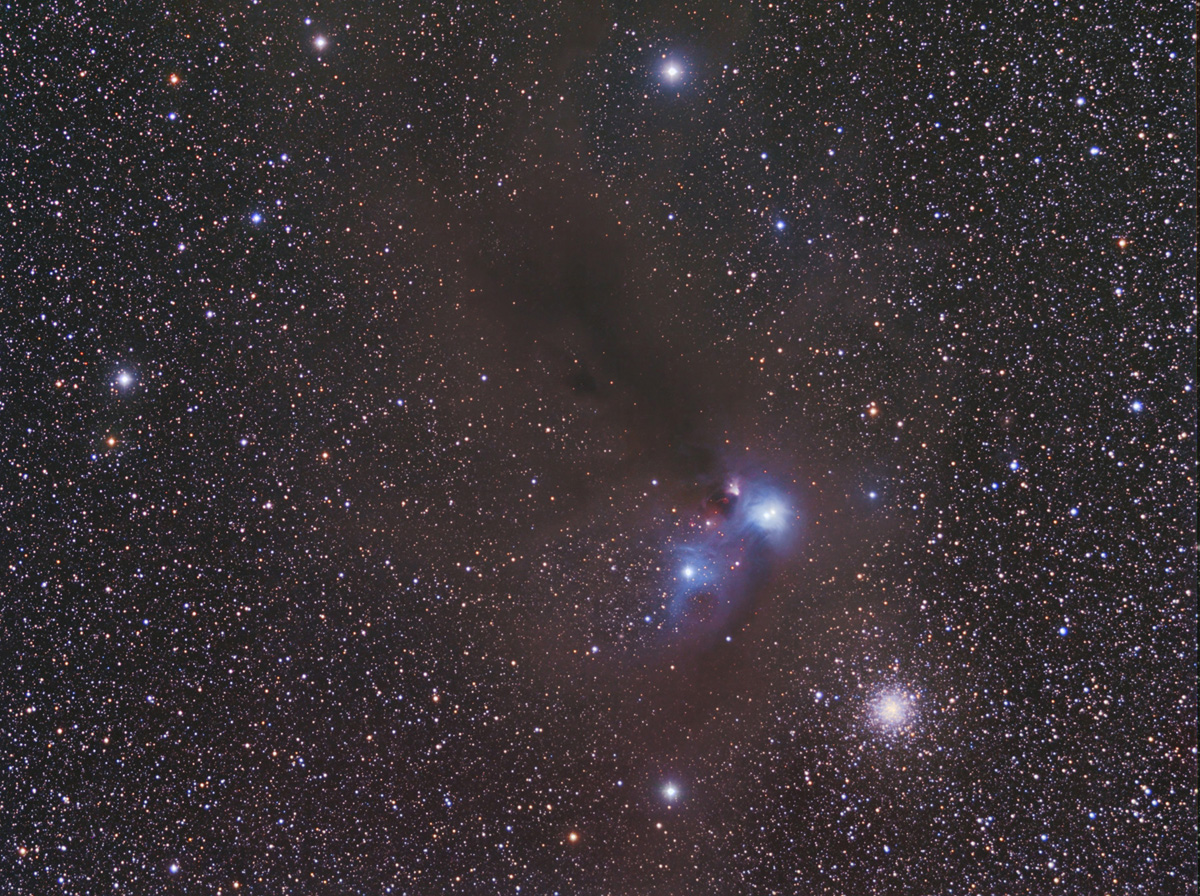
| HOME |
NGC 6726 6727 6729 and IC 4812 + NGC 6723
BRIGHT EMISSION DARK AND REFLECTION NEBULA IN CORONA AUSTRALIS + GLOB CLUSTER
(ra: 19:01.7 / dec -36:53)
CLICK IN THE IMAGE FOR A HIGHER RESOLUTION VERSION
COLLABORATION WITH EZEQUIEL BELLOCCHIO (image adquisition) - ASTROPILAR and SERGIO EGUIVAR (digital processing)
JULY 2010, Buenos Aires, Argentina
DATA
TYPE: Emission Dark and Reflection Nebula with Globular Star Cluster
APPARENT MAGNITUDE: NA
FOV: 150 x 115 arc minutes
DISTANCE: < 500 light years away
OBJECT DESCRIPTION AND IMAGE SESSION
The reflection nebula in Corona Australis is the result of a few bright stars caught up in a large, dusty cloud, across a rich field towards the Corona Australis, the Southern Crown. The dense part of the cloud is about 8 light years long. The reflection nebulosity is charged by the light given off from the young star R Coronae Australis (partly shrouded by the dust). Classified as a Herbig Ae/Be pre-main sequence star, having 10 times the mass of our own sun.
The three nebulae NGC 6726-27, and NGC 6729 were discovered by Johann Friedrich Julius Schmidt, during his observations at Athen Observatory in 1861. The nebula are very faint and almost comet-like in appearance and the double star is easily split.
At the lower right lies NGC 6723, a magnificent Globular Cluster some 30.000 light years away from the reflection nebula.
(*) Source: Australian Astronomical Observatory, APOD
IMAGE INFORMATION
SCOPE: Takahashi Sky 90 II working at 4.4
SKY CONDITIONS: Regular night with poor seeing
CAMERAS: SBIG 8300
FILTERS: Baader
EXPOSURES: LRGB (140,88,88,88) 240 secs subs
GUIDING: Meade LX200 10" ACF, Starlight Xpress Lodestar Camera.
PROCESSING: No darks, nor flats, nor offsets. PI; CCD Sharp Richardson Lucy Deconvolution; Photoshop CS